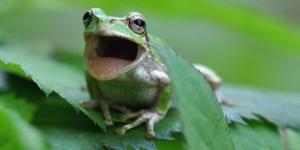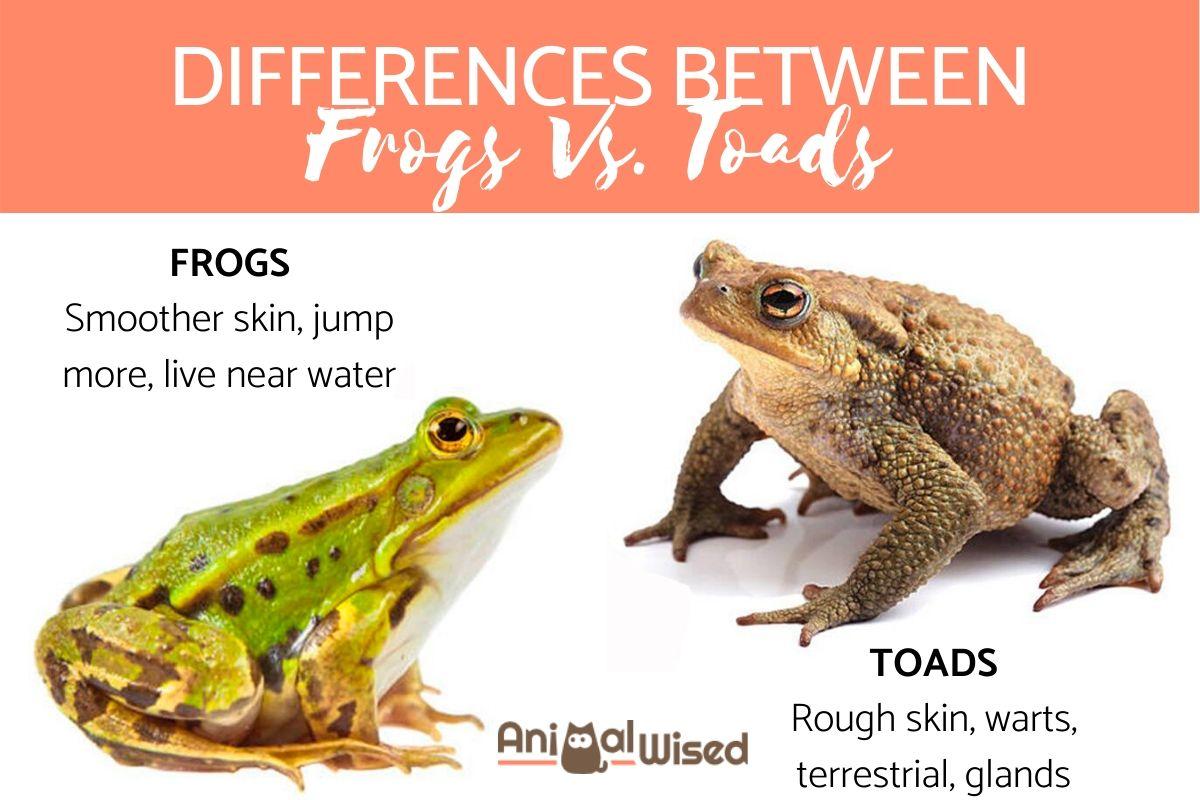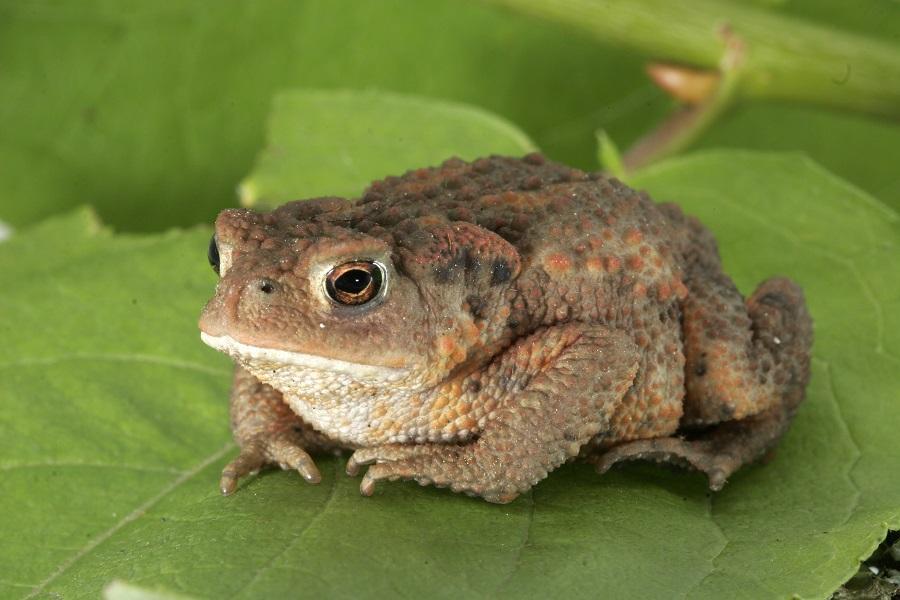Frog Vs. Toad - What is the Difference?

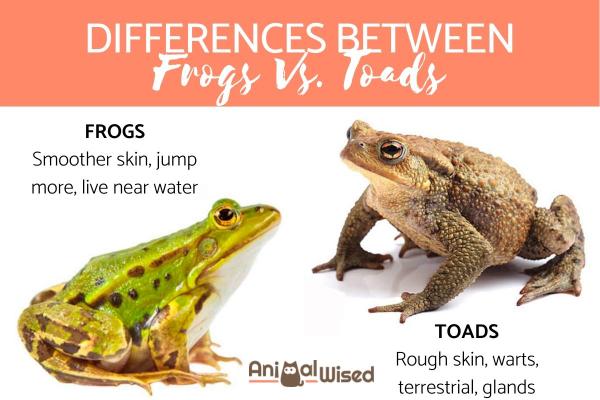
We can often tell the difference between two similar animals by looking at their scientific grouping, known as their taxonomic order. However, when looking at the difference between a frog and a toad, you will see they actually belong to the same taxonomic group. This group is known as the Anura order. The distinction we make between frogs and toads has more to do with our perception than science. In fact, the difference is really an informal and colloquial one.
This doesn't stop many people pointing out that an individual amphibian is a toad rather than a frog or vice versa. This is why AnimalWised looks at the differences between a frog vs. toad and what characteristics define them. We also provide examples with pictures.
Taxonomic differences between frogs and toads
As stated in the introduction, frogs and toads are actually the same animal from a scientific taxonomy standing. The likely ancestors of amphibians were a type of fish from the clade Sarcopterygii, known also as lobe-finned fish. They lived during the Devonian period which became known as the ‘Age of Fishes’. It is believed that this original group divided into two:
1. Batracomorpha
This gave rise to amphibians which are further subdivided into:
- Anura: this includes tailless amphibians in their adult stages, frogs and toads.
- Caudata: tailed amphibians, salamanders and newts.
- Apoda: legless amphibians such as caecilians.
2. Reptilomorpha
Which gave rise to the first reptiles.
Anura inhabit all continents except for Antarctica and desert or polar regions.
Characteristics of frogs
Frogs are animals which are closely associated with water or very humid environments. They have ectodermal glands all over their body, meaning the glands are on a certain layer of the frog's skin. In some cases, these glands secrete a poison, usually the parotid glands behind their eyes. The poison glands do not necessarily work by contact but usually when they feel threatened. Certain species of frog are some of the most poisonous animals on earth.
Frogs also have adhesive glands on the suckers of their fingers. They use these to climb various surfaces. While frogs do have lungs with which they absorb oxygen, they also have the ability to do this through membranes in their skin.
Generally, frogs have smooth skin which is always moist. Their limbs are generally long and thin and the body is not very robust. There are exceptions to these general rules. They can come in various colors (often the brightest are the most poisonous) and, recently, the first bioluminescent frog was discovered[1].
After frogs reproduce, not all start as tadpoles, but many do. To ensure you know how to help them grow into adult frogs, you should know what it is tadpoles eat.
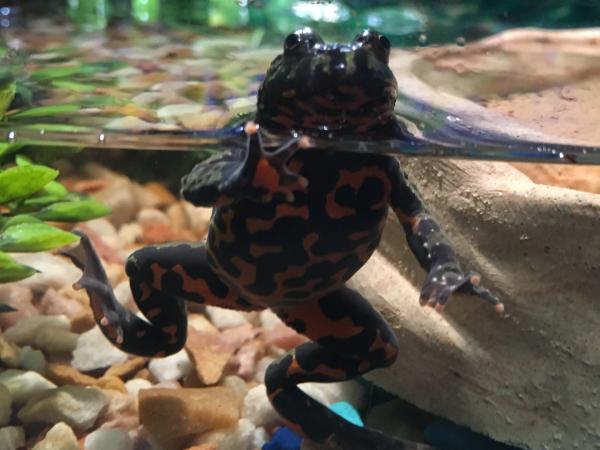
Characteristics of toads
Although comparing the frog vs. toad there is no scientific difference in their grouping, there is something known as folk taxonomy. This means, although not scientifically recognized, many individuals and cultures differentiate them in a certain way. This is the case with frogs vs. toads.
Toads are generally less reliant on bodies of water than frogs because their skin is rougher and covered in hundreds of warts. These warts are not pathological and are part of a They can live in ponds and lagoons, but tend to prefer muddy areas where they are able to tunnel into the terrain and protect themselves from drying out. This is especially important in the dry season or periods of drought.
Additionally, toads can have spurs. These are protuberances located on their hind legs which serve to right them better when jumping or to help latch on to the female during mating. In general toads are considered more terrestrial. Although they hop around, they may also use all four limbs in a slower manner. Arboreal frogs are often thought of more as being true frogs.
Despite their differences, we cannot group them by their diet. What a toad eats in the wild compared to a frog is very much the same, but will depend on availability.
Differences between frog and toad
Although it seems easy to distinguish a frog from a toad, we can make mistakes. There are many exceptions since the terms are, essentially, colloquial. We can always call them a frog if we are unsure. This is because all toads are frogs, but not all frogs are toads. The best way we can determine this ill-defined grouping is by looking at the:
- Skin: a frogs' skin tends to be smooth, soft, and very moist. The skin of toads, on the other hand, is rough and dry.
- Locomotion: frogs are usually jumping animals. They are very agile, fast swimmers and, in many cases, arboreal. Toads are running animals. Although they can jump, they prefer to move on foot with their four legs. They can also dig with their hind legs.
- Appearance: one of the main differences is that toads tend to be thick, stout-looking animals and very muscular. In contrast, frogs are thinner and finer. This does not mean that they do not have strength and the power to move quickly.
- Habitat: finally, there are also differences in the type of habitat in which frogs and toads choose to live. Frogs are more aquatic and their skin dries quickly without the presence of water. Toads are more terrestrial animals. They maintain greater water control in their bodies and they only need a little moisture and can easily use wet earth or mud to survive.
Examples of toads
Most types of toads are poisonous and they emit a strange smell. However, generally, they are harmless to humans and will not attack if left undisturbed. The problem occurs when a wild animal, such as when a cat or dog bites the toad, they secrete toxins from their parotid gland. These toxins enter the mucosa of the animal's mouth and will often require veterinary treatment. Some examples of toads are:
- Common midwife toad (Alytes obstetricans)
- Common/European toad (Bufo bufo)
- Western spadefoot toad (Pelobates cultripes)
- Oriental fire-bellied Toad (Bombina orientalis)
- European green toad (Bufo Viridis)
- Mallorcan midwife toad (Alytes muletensis)
- American toad (Bufo americanus)
- Cane toad (Bufo Marinus)
- American bullfrog (Lithobates catesbeianus) [despite the name, they are considered a toad]
- Natterjack toad (Bufo calamita)

Examples of frogs
Unlike toads, frogs do not always secrete poison. There are even species that are used as a food source for humans. These include the aptly titled edible frog (Pelophylax esculentus). On the other hand, some species of frogs are among the most poisonous animal species in the world. They are the frogs of the Dendrobatidae family, among them we find:
- Golden dart frog (Phyllobates terribilis)
- Blue poison arrow frog (Dendrobates azureus)
- Dyeing dart frog (Dendrobates tinctorius)
- Black-legged poison frog (Phyllobates bicolor)
Other species of frogs include:
- Pool frog (Pelophylax lessonae)
- Marsh frog (Pelophylax ridibundus)
- Moor frog (Rana arvalis)
- Perez's frog (Pelophylax perezi)
- Australian green tree frog (Litoria caerulea)
However, these are only a few of the many different types of frog which can be found in the world.

If you want to read similar articles to Frog Vs. Toad - What is the Difference?, we recommend you visit our Facts about the animal kingdom category.
1. Taboada, C., et al. (2017). Naturally occurring fluorescence in frogs. PNAS, 114(14), 3672-3677.
https://www.pnas.org/content/114/14/3672



